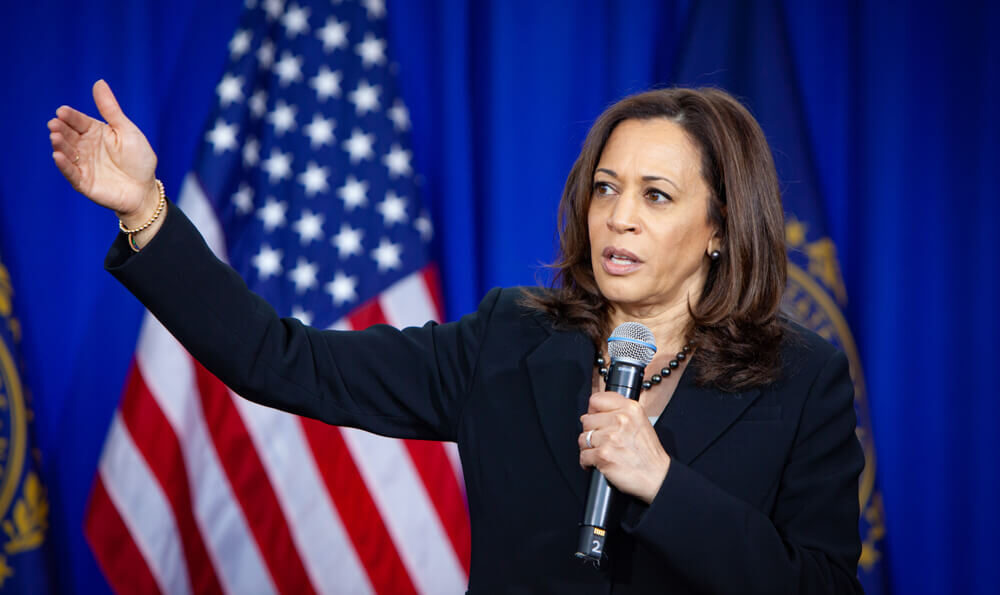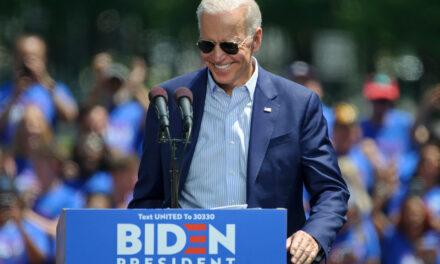[Update] — It’s over. The most cantankerous election in U.S. history is done, and we can get on with our lives.
I may be the last American alive who actually believes in my grandma’s advice to avoid discussing politics or religion at the dinner table. (Were my grandmother still alive today, I assume the same rules would apply to financial newsletters.)
Grandma knew what she was talking about. It’s solid advice. In the world of investing, red and blue aren’t the relevant colors. The only color that matters is green. We’re here to make money, not to test ideological purity.
It’s 2020, so I suppose the unexpected could still happen. Some surprises could come out of the blue in the form of a recount or court case. But it looks like Joe Biden will be the next President of the United States, and Senator Kamala Harris will be the next Vice President.
I wrote the article below on August 13, 2020.
And now that we know how things are going to shake out, I want to help you get your portfolio in place. So, how do we profit from a Vice President Kamala Harris? At minimum, it makes sense to lighten up on energy and financial shares.
You might also want to add a little green energy exposure through a broad ETF like the iShares Global Clean Energy ETF (ICLN) or the Invesco Solar ETF (TAN).
Or if you want to get aggressive, you could even consider shorting financials and energy via the ProShares Short Financials (SEF) or the ProShares UltraShort Oil & Gas ETN (DUG). Just be careful here because these last two are wildly speculative.
As for the overall health of the market, what I wrote in August still applies: Federal Reserve Chair Jerome Powell is still the public figure that matters most. This bull market will meet its end more from a change in Fed policy than any specific policy by either a second Trump administration or a first Biden administration.
Now, to make sure you’re getting the best hand-picked stocks to buy to profit in the new year, I urge you to check out my colleague Adam O’Dell’s Millionaire Master Class.
In addition to finding out the investing secret that allowed Adam to “retire” at age 33, you’ll get access to his premium Green Zone Fortunes service — including the latest stock pick, a distinctly American company that will benefit from a bipartisan bill that’s almost sure to pass early next year. Click here to find out more.
Have a great Thanksgiving, and stay safe and healthy!
—Charles Sizemore
P.S. Want to help your friends and family ensure their portfolios are in solid shape before the new administration takes offices in January? We’ve made it even easier to share our content. Simply highlight part of this article, and you’ll get the option to share on Twitter, Facebook or via email!
[Originally posted on August 13, 2020:]
Well, it’s official. California Senator Kamala Harris is Joe Biden’s running mate and vice presidential candidate.
I steer clear of politics on Money & Markets. If there was an option to “tar and feather them all” on the ballot, I would be first in line to vote. But alas, that’s not an option.
I’m not interested in talking politics. But I am interested in how politics affect my stock portfolio. So, let’s look at what Vice President Kamala Harris might mean for the market.
The open secret of American politics is that the vice president doesn’t matter all that much. He or she is a spare tire. They’re there when you need them, but most of the time, they just take up space.
Given Joe Biden’s age, the potential veep will be a little more significant. But it’s important to remember that the vice president is constitutionally a weak position without a lot of power.
What Kamala Harris Stands For
For better or worse, Harris has a reputation of being somewhat “transactional.”
Unlike, say, Elizabeth Warren, who is a policy wonk, Harris’ ideology is harder to pin down.
Her voting record and campaign promises suggest she’s less interested in pure ideology than she is in appealing to her base of voters on a given issue. That makes her harder to predict, as voters themselves are fickle. So, let’s look at the policy planks she does have.
At the top of the list is a policy she roughly shares with Joe Biden: Medicare expansion. Harris went a little further than Biden, essentially advocating “Medicare for All.” And she’d pay for it with a 0.2% tax on stock trades and a 0.1% tax on bond trades, among other things.
We’re a long way from anything like that getting passed.
But let’s say it does.
This would be good for insurers like UnitedHealth that specialize in Medicare supplemental plans … and bad for Wall Street.
A 0.2% tax on stock trades has no meaningful impact on most buy-and-hold investors, or even most active traders. But it would kill algorithmic and high-frequency trading, which would take away a major source of trading volume.
It would force the entire brokerage industry to rethink its approach.
No one cries for Wall Street. And Wall Street being Wall Street, they’d likely find a way to weasel their way out of paying through a carefully-crafted loophole.
But this would be another tick on the list of negatives already facing the financial sector.
Another Strike Against Financials
Harris also wants credit agencies to include rent, phone and utility bills when calculating credit scores. This would make more credit available to people without enough credit history to be considered for a loan.
Harris has also advocated strong-arming banks into more aggressive lending to poorer communities.
That’s a dangerous road.
Lax lending to low-credit-scoring borrowers helped inflate the pre-2008 housing bubble. It also means that banks would have to set aside more capital to cover loan losses.
But it’s also bullish for homebuilders and consumer-oriented companies.
Americans carry a lot of debt. And I’m not in favor of any policy that encourages us all to borrow even more. But, at least in the short-term, it could mean a nice bump in consumer spending and housing.
Kamala Harris on the Energy Sector
Harris aligns with Biden on many environmental issues.
Harris supported the Green New Deal in 2019. And as a presidential candidate, she claimed to be in favor of a fracking ban. But she did not include a fracking ban as part of her official environmental plan.
This holds to Harris’s pattern of being transactional. She’ll choose the right words to appeal to her voting base. But she’s not an environmental zealot.
All told, Harris is more or less in line with Biden on energy.
Oil companies won’t love her. But she won’t go to war with them either.
Fossil fuel companies will face a tougher regulatory environment, but likely nothing more stringent than Obama-era rules.
However, Harris will be a boon for alternative energy.
Bottom line: With Harris on the ticket, a potential Biden administration will be broadly good for pockets of the health, consumer and green energy sectors and broadly bad for financials and traditional energy.
And for the overall health of the stock market, Federal Reserve Chair Jerome Powell is still the public figure that matters most.
This bull market will meet its end more from a change in Fed policy than any specific policy by either a second Trump administration or a first Biden administration.
Money & Markets contributor Charles Sizemore specializes in income and retirement topics. Charles is a regular on The Bull & The Bear podcast. He is also a frequent guest on CNBC, Bloomberg and Fox Business.
Follow Charles on Twitter @CharlesSizemore.






